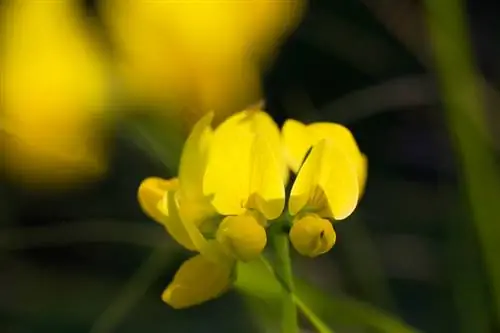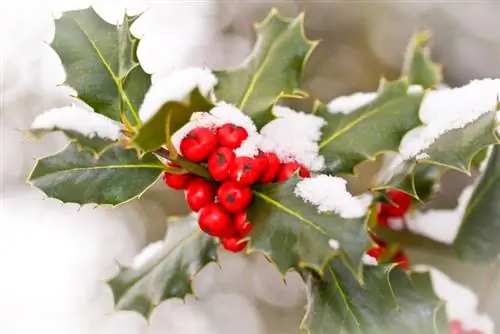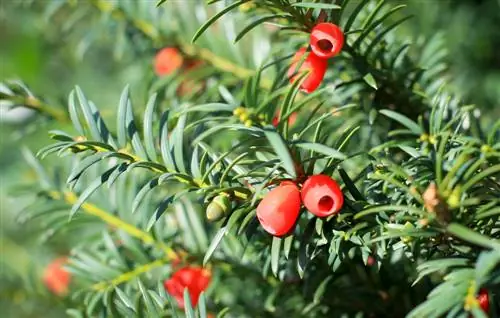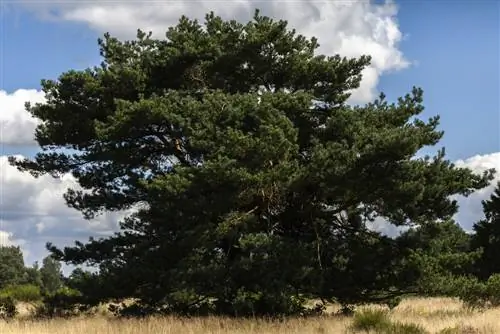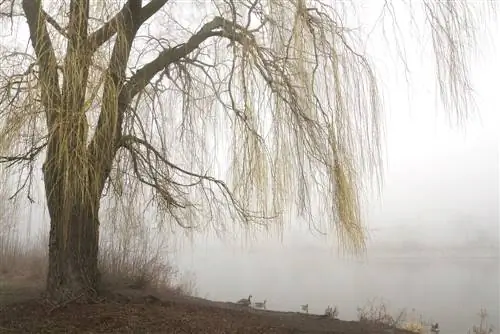- Author admin [email protected].
- Public 2023-12-16 16:46.
- Last modified 2025-06-01 06:02.
One of the most common native plants is ivy, which belongs to the Aralia family. It is grown in the garden as a ground cover, for facade greening or as a privacy screen. In nature, ivy often occurs in slightly damp, shady locations. A profile.
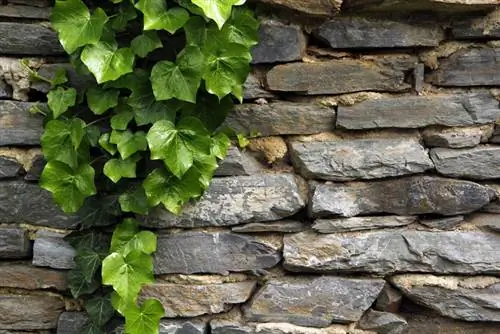
What is an ivy profile?
Ivy (Hedera helix) is a poisonous climbing plant from the Aralia family that can live up to 500 years. It has green, lobed leaves, flowers in autumn and produces dark purple to black fruits in spring. Ivy is hardy and is valued as pasture for bees.
The ivy - a profile
- Botanical name: Hedera helix
- Plant family: Araliaaceae
- Origin: probably tropical forests
- Occurrence: worldwide
- Species: ten species
- Height: unlimited as a climbing plant
- Age: 400 to 500 years possible
- Age forms: young plant, age form from around ten years
- Leaves: mostly green, occasionally variegated
- Flowers: light green
- Flowering time: September to October
- Fruits: dark purple to black
- Winter hardiness: absolutely hardy
- Poisonousness: yes, in all parts of the plant, especially the berries
- Use: climbing plant, ground cover, houseplant
- Special features: gets red leaves in autumn
The age form of the ivy
In few plants the different age forms are as pronounced as in ivy. As a young plant, it only forms tendrils with adhesive roots that climb along walls, facades, fences or on the ground. The leaves of the young form are multiply lobed.
Ivy reaches its age from around ten years of age. It then only grows upwards and no longer forms climbing tendrils. The leaves become darker and are hardly lobed anymore.
Ivy only blooms when it is older and produces highly poisonous fruits. The flowering period falls in autumn, the fruits ripen in spring.
Ivy as a bee pasture
Because ivy blooms late in the year, it is one of the particularly valuable plants in the garden. The flowers are an important source of food for bees and wasps, which only find a few flowering plants at this time of year.
Ivy is poisonous
Ivy is poisonous in all parts of the plant. The fruits in particular pose a serious risk of poisoning for people and animals. If only three berries are eaten, it can have fatal consequences.
The leaves of some types of ivy turn red
One of the special features of ivy is that some varieties develop red foliage in autumn. The red color is caused by pigments in the leaves. The leaves can also turn red in strong sunlight.
Tip
The name Ivy stands for eternity. That's why ivy is often used as a symbol of eternal loy alty in wedding bouquets and on grave sites.


